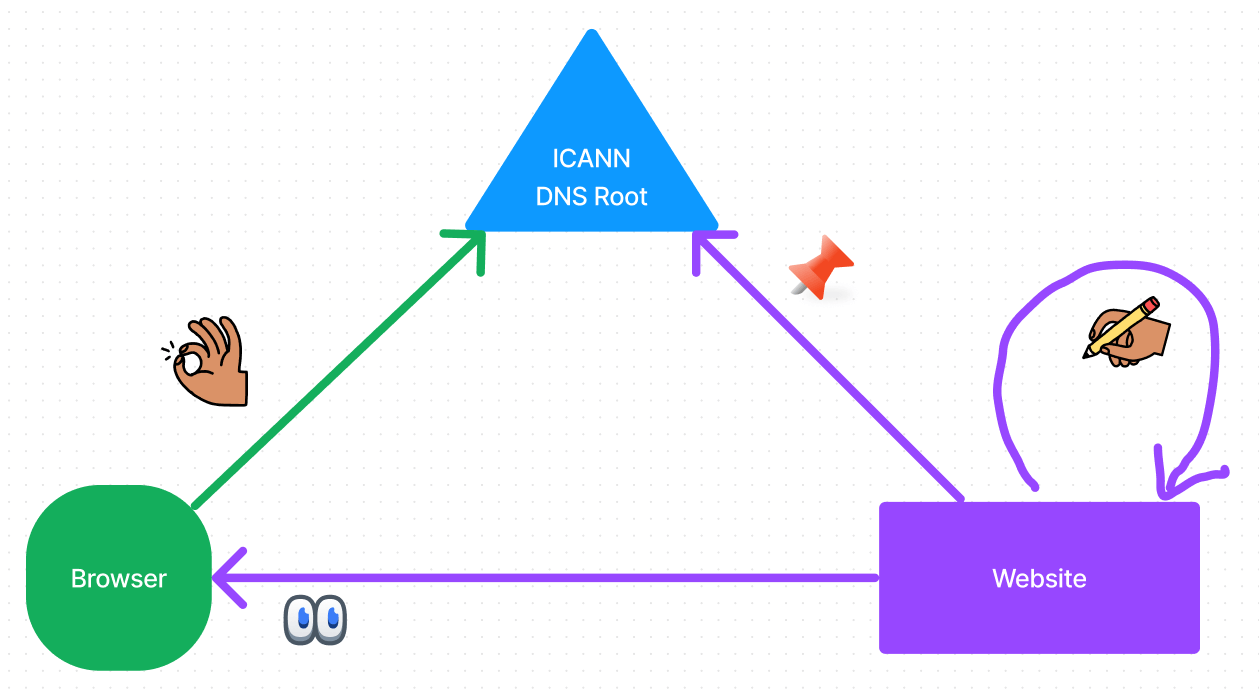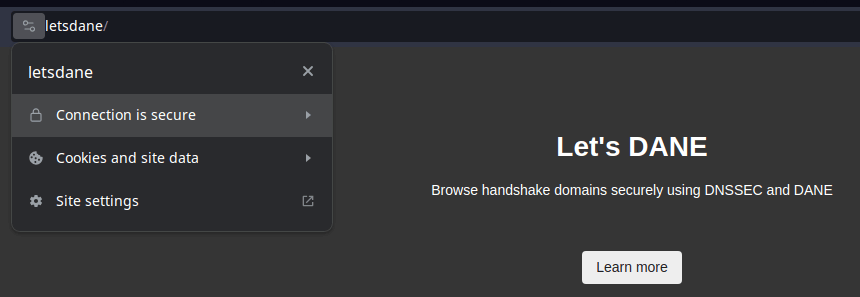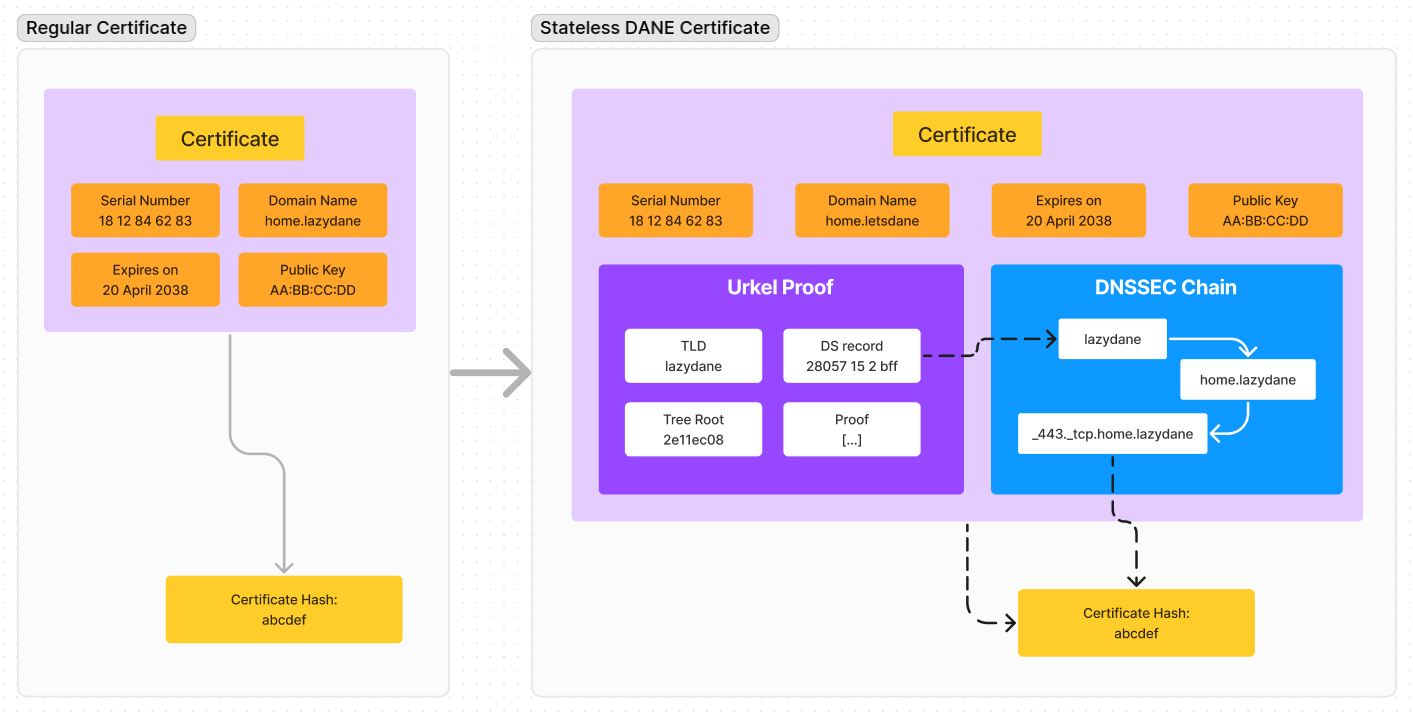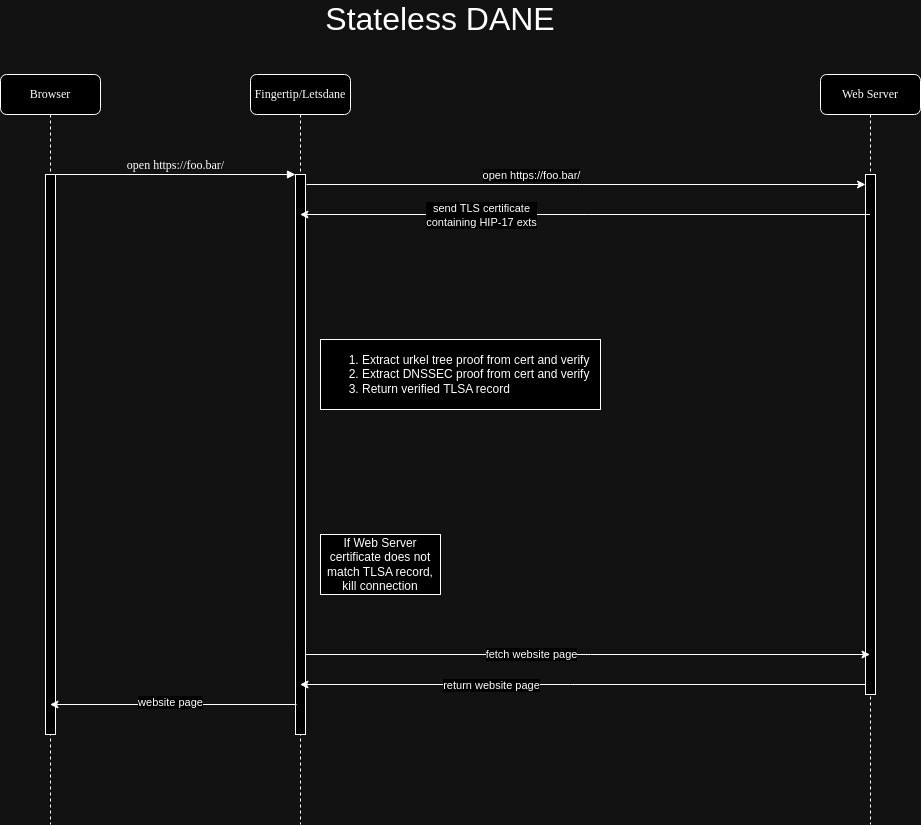First,
A bit about DANE
CAs
Most websites out there are served securely over HTTPS. This is possible with the help of “trusted” entities called Certificate Authorities (CAs) that issue certificates to websites. And when you visit any of these websites, the browser checks if the website has a valid certificate issued by a CA it trusts.

However, this requires everyone to trust CAs to always act responsibly and never be compromised in any way. If a CA is compromised, this can lead to serious security issues, like the issuance of fraudulent certificates.
All operating systems (on phones, desktops, gaming consoles, etc.) and all browsers have their own root stores of CAs that are trusted.
While this is currently the best way to secure websites, DNS-based Authentication of Named Entities (DANE) attempts to improve it.
DANE
To be clear, DANE isn’t exactly new. There are RFCs dating back to 2011. They’ve also been in use for emails for years.
Here, the whole process of verifying a (TLS) connection with the website remains the same. But instead of trusting CAs, websites can use any self-signed certificate. How do you verify it though? Through a chain of trust that leads to DNS (the “D” in DANE). We won’t go in depth here but the short version is that we move from “Trust hundreds of CAs” to “Trust DNS”.

Now this has been done before, even for websites — Chrome even ran an experiment with DANE support a decade ago. But it never took off primarily because, “Trust DNS” meant you still had to trust another entity if not the CAs — the DNS root zone that’s managed by ICANN.
DANE for Handshake
If you haven’t heard of Handshake, it’s an alternate DNS root zone that is decentralized and open to everyone. Anyone can own a Top Level Domain (TLD) and own the entire namespace under it.
The neat thing about Handshake is that it’s “just” DNS. Remember the problem of trusting a root zone from before? Well, Handshake solves that. The root zone is secured with proof of work, so with some magic (more details below), DANE can work completely trustlessly!

This isn’t theoretical. Handshake websites have been secured with DANE since 2020! Try it out for yourself with a secure resolver like Fingertip.

The Problem
DANE works and is great, but it’s not all sunshine and roses.
- The resolver needs to be Always On — The handshake light client that is required to fetch and verify root zone records must stay connected to peers. It doesn’t take up a lot of resources on desktops, but becomes more noticable on phones and embedded computers where every mAh counts for a longer battery life.
- This also means that volunteer full nodes are required to help these resolvers. Running these are fairly cheap (a ~$20/mo cloud machine takes care of several hundred clients) but costs nonetheless.
- Resolving from peers is Slow. It’s usable, but the overhead of querying multiple peers, waiting and verifying everything takes a bit of extra time, compared to the regular way.
Browsers interested in integrating Handshake usually find these issues as barriers and sometimes blockers to add Handshake support.
“Stateless”
A new proposal HIP-17 aims to solve this with Stateless DANE. Stateless simply means that the app running on users’ devices doesn’t have to stay connected to other nodes.
Everything required to verify the connection will be provided by the website itself.
But verifying proof of work will need some kind of reference to the blockchain right? So the app will, in the background, connect to peers and quickly sync like a light client. This will only take a ~5 seconds a day, which is a significant improvement over staying connected all day.
How it works
There are 2 kind of proofs required for DANE with Handshake:
- Urkel Proofs - Proof of on-chain records for a TLD, including trust anchors
- DNSSEC Chain - A chain of signatures for a TLSA record, leading up to the trust anchor
The TLSA record stores what certificates can be trusted.
By linking these two proofs, we get a full chain of trust right from the blockchain to the certificate from the website. We can be sure that the owner of the TLD has allowlisted this certificate to be used.
In regular DANE, urkel proofs are requested from peers and DNSSEC chain is generated by the app running on the user’s device.
Stateless DANE Certificates
Since we’re trying to do away with peers, in S-DANE, both these proofs are embedded in the certificate itself! i.e. the certificate contains everything it needs to prove itself.

The Urkel Proof proves the trust from the blockchain to the TLD. The DNSSEC chain continues from the TLD to the website certificate. And the certificate contains both these proofs. See the cycle completing?
How this helps
- Always On - the app doesn’t need to stay connected anymore, making it friendlier for phones and embedded devices.
- Cost - full nodes don’t have to help light clients with resolving DNS queries anymore.
- Slow - by using public handshake resolvers, the cache level moves one level up and is shared by many users. Also, each user doesn’t have to make multiple DNS queries to verify the DNSSEC chain.
More details
We can break up what the client side app does in two:
- Resolving Handshake - finding the website for a domain
- Verifying the connection - securely connect to the website
Regular DANE requires the client app to handle both. Stateless DANE reduces the burden on clients by outsourcing both resolution and proof creation to a public resolver and the website it is trying to reach, respectively.
If you’re still curious about how the whole S-DANE process differs from regular DANE in practice, these flowcharts might help:
| Regular DANE | Stateless DANE |
|---|---|

|

|
What’s next
Stateless DANE is still new, resolvers and integrations are still being built. This post will be updated once they’re ready.
In the mean time, try setting up your own Stateless DANE website and share your thoughts on it!